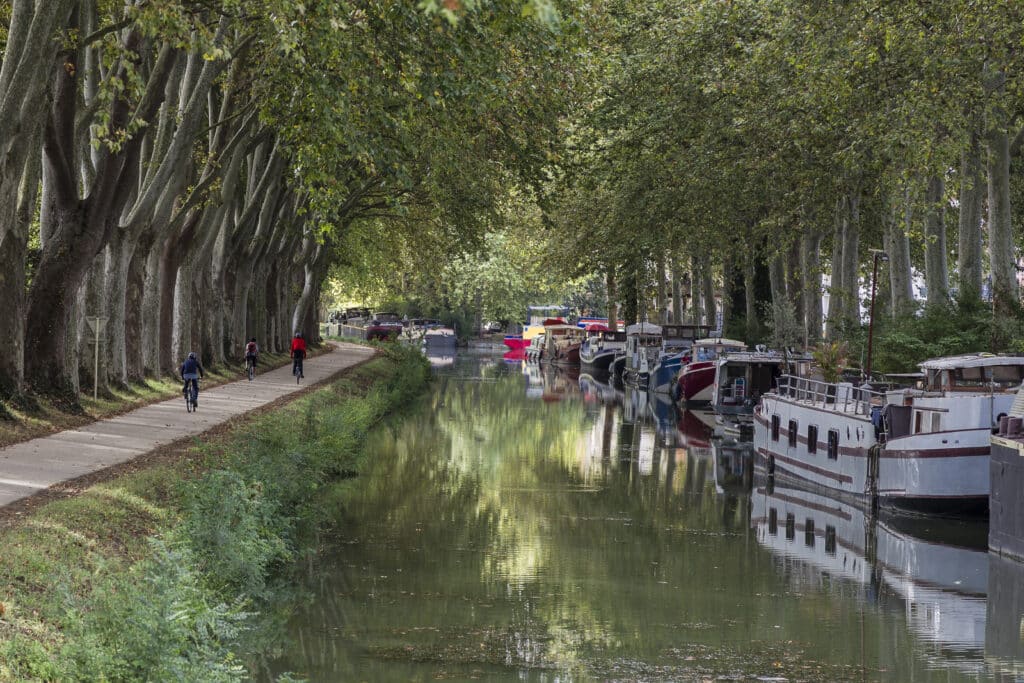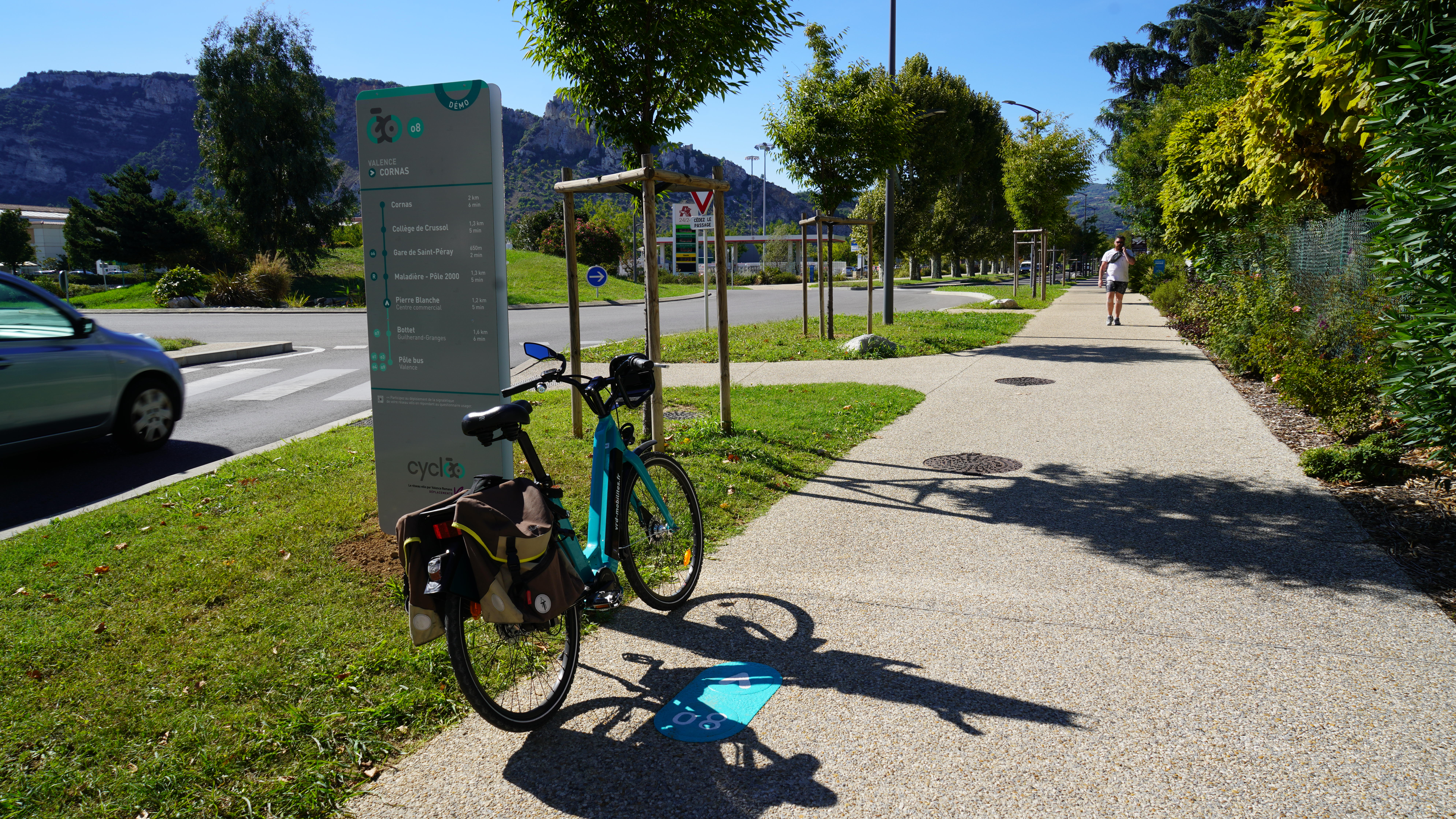Cycling is on everyone’s lips, or rather everyone is doing it: after the historic boom seen in the post-pandemic months, the figures for use of cycle paths are back on a more modest scale, but the trend remains clear. In 2022, London saw an 18% increase on 20191. In France, the orders of magnitude are similar, with ridership up by 13% compared with 2021, and 41% compared with 20182, although these figures mask a disparity that is still very much in evidence between urban, suburban, and rural areas.

While the enthusiasm for an active, low-carbon mode of transport seems to be worldwide, take-up varies greatly from one region to another. In Europe alone, the modal share of cycling varies from 1% in Portugal to 27% in the Netherlands3. Behind this heterogeneity of situations, there are several factors that help to explain the multi-speed progression, but we will focus on one that encompasses them all: the inadequacy of existing cycle infrastructure and of a coherent, attractive and safe cycling ecosystem, including parking.
A global survey4 carried out in 2022 by IPSOS among more than 20,000 adults in 28 countries pinpoints the main factor holding back the growth of cycling: 52% believe that cycling is too dangerous under current conditions, even though the benefits of cycling (contribution to decarbonisation, calmer cities, less traffic congestion, more active lifestyles) are well understood.
The development of cycling is directly correlated with political will and the relevance of the public policies that support it. Although the first national plans date back to the early 90s in Europe, and the UN urges governments every year to develop active mobility, only 14 countries in the pan-European zone have so far introduced national cycling policies5.
In France and the UK, however, the political authorities have taken up the issue: the Plan Vélo & Marche is aiming at 80,000km of safe facilities in France by 2027 and a modal share of 9% by 20246; in the UK, the government has earmarked a budget of £2 billion to develop cycling and walking by 20257, and set up a dedicated authority, Active Travel England, in 2022.
How can we support this momentum and ensure a barrier-free future for cycling?
1 Travel in London, report 15, Transport for London, Décembre 2022 https://content.tfl.gov.uk/travel-in-london-report-15.pdf
2 Analyse des données de fréquentation cyclable 2022, Vélo & territoires, Juin 2023 https://www.velo-territoires.org/wp-content/uploads/2023/06/Rapport_PNF_2022.pdf
3 European Cyclists’ Federation, cycling data https://ecf.com/cycling-data
4 Cycling across the world, IPSOS, Mai 2022 https://www.ipsos.com/en/global-advisor-cycling-across-the-world-2022
5 The State of National Cycling Strategies in Europe, European Cyclists’ Federation, Décembre 2022, https://ecf.com/files/reports/state-national-cycling-strategies-europe-second-edition-2022
6 Plan Vélo & Marche 2023-2027, Gouvernement, https://www.ecologie.gouv.fr/sites/default/files/23100_DP-Plan-velo-2023.pdf
7 Gear Change, Department for Transport, https://assets.publishing.service.gov.uk/government/uploads/system/uploads/attachment_data/file/904146/gear-change-a-bold-vision-for-cycling-and-walking.pdf
Conviction #1: Support governance
From the countryside of Nantes to the banks of the Thames, cycling progresses when its governance is clear and strong. As an extension of an unequivocal national will, it is an effective trickle-down of responsibilities, skills and enthusiasm that is needed, with the most local level generally being the one in charge of turning major ambitions into reality. And in this maelstrom of governance, the role of engineering is more than ever to help these players calibrate their networks and find the most appropriate solutions.

In France, the national impetus given by the government plans of 2018 and 2023 has resulted in a real regional dynamic: the State, through its regions – Brittany, New Aquitaine, Île-de-France, Grand Est – intends to make active mobility a driver for development.
But it is really at local, inter-municipal and metropolitan level that these plans are taking shape. For example, SYSTRA has supported the metropolises of Lyon and Nantes at various stages of their planning (prospective mobility studies followed by a parking master plan in Lyon from 2018, and currently visual identity and signage for the network). Further south, in the Toulouse conurbation, Tisséo Collectivités, the authority responsible for organising transport, has given the green light to the design of the Réseau Express Vélo (REVe), with which SYSTRA has been associated for several years.
Other cycling initiatives can be found in tramway projects, such as those in Bordeaux, Villejuif, and Tours, or in bigger mobility projects (widening of the Anne de Bretagne bridge, creation of the Rouen soft mobility footbridge, multimodal interchange hub in Cagnes-sur-Mer, under the project management of the SNCF).
Conviction #2: Convincing thanks to data
Whatever the geography, in constrained environments where every square metre of public space has to be used intelligently, the bicycle cannot do without justifying its usefulness, and it often still has to prove its worth to convince the general public and the authorities alike. Historical models are not very well suited to the task, as they are unable to take full account of the impact of active mobility. It is therefore up to the engineering departments to better equip cycling policies with appropriate models that take into account the factors specific to cycling: safety, comfort, effort levels, types of use, parking, economic and socio-economic benefits, the user-friendly and fun aspects specific to this mode of travel, etc.
As in the UK, cycling can be a highly political issue. The development of cycling and active mobility is taking place at different speeds, depending on the level and forces in place. In Ireland, the arrival of the Greens in power was followed by a real boost in terms of cycling policy. The same is true in Scotland and Wales, with, as elsewhere, major disparities between urban, suburban, and rural areas. The subject is often exploited in local elections, where transport issues become a partisan issue between the ‘pro’ and ‘anti’ parties, who see the development of cycling as an anti-car movement. Faced with opposition that is as strong as it is organised, local authorities are demanding concrete data and studies on the benefits of these soft forms of mobility, so that they can move forward with their plans more smoothly.
The role of an engineering company like SYSTRA is therefore to support these efforts and provide them with the tools they need to ensure that their projects are acceptable. SYSTRA UK has also adopted a ‘quick-win’ approach, offering solutions that are fast and easy to implement, because nothing convinces like proof by example.

The Australian example represents a further step in the convincing work that cycling still needs to do. On the island-continent, there is no national will or plan: enthusiasm and implementation are either local or they are not. Development and maintenance of cycle networks is left to the municipalities, and funding to the States. In a country of unprecedented dimensions, the car has established itself as the only means of getting from A to B. But attitudes are changing, particularly in the wake of Covid and the realities of climate change. Some municipalities, such as Sydney and Wollongong, are already convinced and well ahead in the development of active mobility.
Safety, practicality, intermodality – the bicycle still needs to prove its worth to raise awareness and capture the attention of local councillors. Data, modelling and quantifying the benefits makes all the difference, if the recent successes achieved by SYSTRA in New Zealand are anything to go by.
To this end, SYSTRA has developed Cyclops, an innovative tool for quantifying the costs and benefits of new cycling schemes. All too often this quantification focused on the costs associated with cycling (road congestion, increased journey times by car and loss of parking space), forgetting to highlight all the benefits that flow from it, such as calming down urban spaces, travel times that are shorter and more manageable than by car, a reduction in CO2 emissions, and improved physical and mental fitness for users. The Cyclops tool can be used to calculate these benefits and highlight them in preliminary studies commissioned by transport authorities and municipalities.

This works against active modes, since there are few counts and models for these soft modes, unlike the road network, where a great number of sensors and complex models exist to measure (and thus develop) the use of this network. Our approach will help to redress the balance and give cycling the tools it needs to catch up and justify its place in our public space.
With its integrated approach, from modelling and design to monitoring, SYSTRA can offer comprehensive support to mobility operators. In the UK, for example, SYSTRA has helped Transport for London to design its cycle parking facilities and Transport Scotland to study its financing schemes. Revealing the lines of desire for cycling is a complex operation. Cycling is not just about modelling lines. Since it must justify its footprint on the road, it has to be considered as a complete ecosystem.
Conviction #3: An ecosystem rather than a network
More than any other mobility solution, the bicycle needs to work on its integration. It can be used on a daily basis, for leisure, or for tourism, and this requires careful interaction with existing networks. To be adopted, cycling needs to be considered as an ecosystem: while the question of routes is the most important, to support cycling we also need to think about parking, signposting, safety, services (repairs, maintenance, etc.), integration into a multimodal mobility scheme, etc. Not to mention the fact that the needs and possibilities will vary greatly depending on whether we are working in an urban, suburban, or rural environment.

Therefore, we need to be able to think about ALL the dimensions of the bike. This is where engineering has perhaps the most important role to play. For example, SYSTRA has mobilised its its financing expertise in Scotland. In Valencia, in collaboration with Copenhagenize, SYSTRA is working on the deployment of service supports and signage for the new cycle network. The work can also focus on the legibility and visibility of infrastructure to provide line and network plans. In Lyon, the Group has been working on a masterplan for cycle parking in the city, firstly to understand and quantify needs, and secondly to help remove obstacles and facilitate intermodality.
Because they are most often associated with wider projects (light rail, tramway, rail, mobility masterplan), cycling projects must necessarily be considered in synergy. It is a question of creating increasingly complex network architectures, corresponding to increasingly heterogeneous uses, with numerous possible scenarios and a sharing of space that is increasingly difficult to organise. Understanding how governance works, using data to better model and show the real benefits, and being able to cross-fertilise expertise – cycling represents a real challenge for modern engineering.
 Australia
Australia  Brazil
Brazil  Canada
Canada  China
China  Denmark
Denmark  France
France  Indonesia
Indonesia  Ireland
Ireland  Italy
Italy  Malaysia
Malaysia  New Zealand
New Zealand  Norway
Norway  Poland
Poland  Saudi Arabia
Saudi Arabia  South Korea
South Korea  Sweden
Sweden  United Kingdom
United Kingdom  United States
United States  Singapore
Singapore  Taiwan
Taiwan  Thailand
Thailand  Vietnam
Vietnam